Expo shutterbug says so long
August 14, 2013
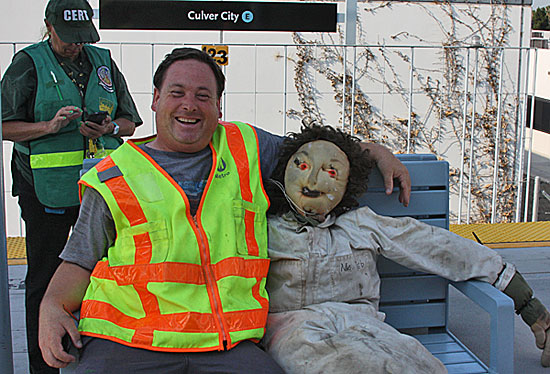
Dwight Sturtevant, aka Expo Line Fan, on the other side of the camera with Metro's crash dummy, Ms. Deb.
By profession, he’s a television engineer. But when he dons a fluorescent yellow vest and picks up his Canon EOS 40D camera, Dwight Sturtevant transforms into…Expo Line Fan.
At least he did until this week.
After nearly three years of chronicling the second, final phase of the Expo Line light rail project down to the last rivet and rebar, Sturtevant is leaving town for a new job in Ohio—and leaving behind a project he has documented in thousands of images and nearly three dozen videos since 2010.
Through it all, Sturtevant has worked anonymously and without compensation, with public credit for his photos going simply to “Expo Line Fan,” if it was given at all. But now, at last, his story can be told.
“I am just a rail fan who has been unofficially the project photographer,” the prolific volunteer said recently as he took a break from packing for the move. “I’ve had a free hand.”
Using his own photo equipment and wearing a Metro safety vest and a hard hat he purchased himself, Sturtevant has become a familiar figure on construction sites all along the 6.6-mile stretch where work is now underway to extend Expo from Culver City to Santa Monica.
His photos have appeared on Metro’s blog The Source, on the project’s website, on Supervisor Yaroslavsky’s website, in construction trade journals and on his own voluminous photo-sharing site.
“We use his pictures even in our office. It’s just built so much enthusiasm,” said Skanska USA Civil Executive Vice President Mike Aparicio, who added that Sturtevant’s outlook on the project has rubbed off on the whole Expo team. “When they see that kind of enthusiasm, they just feed on it.”
“He’s done a great job of capturing key milestones and highlighting progress,” Gabriela Collins, Expo’s government/community relations manager, said in a statement. “We thank him for sharing his wonderful photos and wish him well!”
While others have chronicled Expo’s progress in photographs, “Dwight has taken more than anybody,” and got unique shots because of his access to the construction process, said Darrell Clarke, a founder and co-chair of Friends 4 Expo Transit, longtime advocates for the project. “I’ve enjoyed his passion for following the project,” Clarke said.
Since his photo odyssey began, he has regularly delivered his copious output to the contractor, Skanska USA, to the Expo Construction Authority and to the Metro Library’s archives. It adds up: “If you figure every week since 2010, 200 pictures every week—do the math. It comes out to a lot of pictures.”
His connection to the project began—as so many L.A. adventures do—with a search for an alternate route. He was commuting at the time between downtown Los Angeles and the airport area and started to use Flower Street and Exposition Boulevard to get home. “And that’s when I went, ‘Wow, they’re building a light rail project.’ ”

One of his favorites: time lapse shot of drilling for the Venice Boulevard Bridge. Photo/Dwight Sturtevant for Expo and Metro
When the company he was working for relocated to New Mexico, Sturtevant had more time on his hands and he was able to devote two days a week to photographing Expo.
“Over the last 2½ years, I’ve gotten the respect of Skanska where they’ve allowed me access to the project. Metro’s given me access to do certain things because I’ve earned the trust slowly, proved I wasn’t some nutcase,” he said.
He’s also become a familiar face to Metro’s train operators. For the past two years, he’s been printing up large posters with collages of his photographs to show them the project’s progress. He dropped off his last one at the 7th Street Metro Center last week, with a note: “To all my friends at Metro, I will miss you…I hope you have enjoyed the photos. Dwight S., aka the Expo Line Fan.”
Sturtevant, 51, said he has boyhood memories of looking at freight trains with his grandfather. His rail enthusiasm, literally, came with the territory: “I grew up in Boston. We had the first subway system in the country.”
His wife isn’t so keen on his hobby, however. He said her attitude is best summed up as: “If you’ve seen one train you’ve seen ‘em all.”
But he views his Expo work as a chance to make a difference, and to be an eyewitness to the construction of a light rail project that, in part, moves along the same route once traveled by the city’s late, lamented Red Cars.
“There’s not many places in the country where you’re able to watch cities regain what they’ve lost,” he said. “I mean, L.A. had all this once, and then we lost it.”
Sturtevant said he will be back for the project’s grand opening in 2015, and sooner if he can. In any case, the move to Ohio—where he’ll work for a mobile TV company that records professional sporting events—has at least one advantage for a train buff.
“The house has a big basement,” he said. “I’m going to be able to put my model railroad back up.”

The Venice Boulevard Bridge, under construction last week. Photo/Dwight Sturtevant for Expo and Metro
Posted 8/13/13
The dogs of war come home
August 8, 2013

She was a hero overseas and now Tula, along with handler Dep. Guillermo Loza, is making L.A. County safer.
Just last year, Tula was in Afghanistan, sniffing out buried explosives and saving lives and limbs in the war zone. Now her beat is Los Angeles County, where on a recent afternoon she put her exceptional sniffing abilities to work on a random stroller she encountered in Grand Park.
The glossy black Labrador retriever has traded in her military handler for a new partner on the homefront, Los Angeles County Sheriff’s Deputy Guillermo Loza.
Tula and Loza are part of Countywide Services Division K9, a new sheriff’s unit that started operating last month with a mission of keeping watch over county facilities, parks and events. Tula is an explosives dog, trained to find the various bomb materials that could be used in an attack. She and another black Lab, Ruby, joined the department after serving with the U.S. Marines in Afghanistan. There, Tula and Ruby were experts in locating roadside bombs known as IEDs, or improvised explosive devices. IEDs are the leading cause of fatalities for the U.S. and its allies, responsible for the deaths of 3,275 soldiers in Afghanistan and Iraq as of Memorial Day, 2013.
“They uncovered more than 40 IEDs each,” said Sergeant Mark Jennings, who heads the new division, which also includes his narcotics-sniffing dog, Chip. “They can’t give me a number of lives these dogs saved, but with convoys, it’s in the hundreds.”
Jennings, a former Marine, scored the sought-after hero dogs for Los Angeles County last fall in North Carolina, where representatives from dozens of law enforcement agencies vied for 50 of the returning military canines. The program is part of a campaign to place the dogs as the U.S. reduces its canine military strength in Iraq and Afghanistan from 480 dogs to 180.
As Tula and Ruby went through their paces in front of the law enforcement crowd, Jennings was impressed—and he wasn’t alone.
“Just about everyone wanted Tula and the other half wanted Ruby,” he said. “We had to do a drawing, and we got lucky.”
The 3-year-old Tula and the muscular 6’4” Loza made a striking duo as they made the rounds in Grand Park recently.
“I like your dog,” shouted a young girl while skipping toward the park’s splash fountain.
“Aww, what’s her name?” asked a woman dressed in business attire, while a tourist snapped a photo.
They’re getting used to attention from the public.
“At first they see this tall deputy and they’re like ‘oh my God’ but then they relax and say, ‘Oh look, there’s a dog here,’ ” Loza said.
On cue, Tula darted off and investigated bushes, trash cans, bags and anywhere else a bomb might be hidden. Finding nothing, she returned for a bit of affection and a chance to play with her favorite chew toy.
Like other veterans, Tula and Ruby returned with a few psychological scars.
“Initially they wanted to be very close to you,” Jennings said. “As far as noises and being around people, they were a little hesitant, a little jumpy. They definitely showed signs of what I call PTSD in dogs.”
Handlers of explosive-sniffing dogs need to be the best of the best too, Jennings said. The wrong handler “can screw up a dog very easily.” Loza and Deputy Danny Cassese, who handles Ruby, were at the top of their training class—a prestigious distinction.
Before being deployed, the dogs and deputies trained together with a local expert for four weeks. As they make the transition from military to civilian duty, it helps that they are Labradors, a popular pet breed. The dogs are mellow and gregarious in crowds. German shepherds, on the other hand, tend to intimidate people, Cassese said.
The biggest hurdle was training Tula and Ruby to work on leashes. In Afghanistan, all their searching was performed “off-leash.” Handlers would send them ahead to scout for explosives. On their new beat, much work must be done “on-leash.”
Yet the ability to work off-leash is what sets Tula and Ruby apart from the dogs assigned to the 60 other K9 units in the county, which search for bombs and also things like narcotics, guns and dead bodies. Working off-leash allows the former war dogs to explore suspicious situations while human deputies keep a safe distance.
The dogs live with the deputies and the pairs develop a close bond, which is essential to their performance. Continued training is part of the job description and up to 3 hours of each shift is devoted to it. When the day is done, Tula and Ruby live the good life of any other well-cared-for pet in Southern California. Tula likes running on the beach and investigating every corner of Loza’s house, while the 5-year-old Ruby “will play with a tennis ball until she passes out,” Cassese said.
The deputies receive daily training on trends in terrorism and counter-terrorism efforts, said Loza, who believes domestic attacks like the Boston Marathon bombing could increase as U.S. war efforts draw to a close and create a greater focus on stateside targets. That’s where Tula and Ruby come in.
Last week, the dogs “cleared” (declared safe) a suspicious package at Los Angeles City College. Their biggest find so far came on a parole compliance sweep, which is one of their secondary duties, performed on request. Because guns and ammunition contain gunpowder, the dogs can detect it. Ruby located a belt of 75 high-caliber rifle rounds meant for a machine gun, 50 smaller rifle rounds and a 12-gauge shotgun round that were in the possession of a prior felon. (Loza said both dogs found the bullets, but Ruby got the credit “this time.”)
Jennings said the program is a great financial deal for the county. Bomb-sniffing dogs are bred specifically for the task and undergo months of expert training. All told, each would normally cost upwards of $50,000. As more return from the war, Jennings hopes to expand the division to include up to 5 more K9 teams.
Not all returning war dogs are deemed young enough and fit enough for further service. Some have had serious injuries.
Bob Agnor, a senior trainer for K2 Solutions, a company that provides the dogs and training to the military, said those dogs are returned to civilian life, often being adopted by their Marine handlers.
“These dogs literally saved their lives,” said Agnor, whose company hosted the North Carolina event at which Tula and Ruby were recruited. “They think, ‘This dog has earned the right to live in my house and be treated like a king or a queen.’ ”
Tula and Ruby still wear military dog tags in honor of their service abroad. When they retire from the Sheriff’s Department, Loza and Cassese will have the first option to adopt.
“I’ll get to keep Tula,” said Loza, smiling broadly. “And I will, of course. She’s the best partner ever.”
Posted 8/1/13
Reinventing DCFS
August 8, 2013
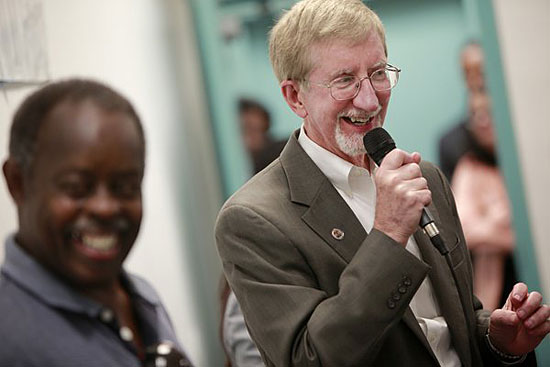
Philip Browning, at a community meeting, is leading the charge to transform DCFS from within. Photo/L.A. Times
Despite the highly-publicized creation of a blue-ribbon commission to investigate potential flaws in Los Angeles County’s child protection system, the Department of Children and Family Services already is in the midst of a sweeping transformation aimed at boosting the beleaguered agency’s effectiveness and accountability.
The breadth of the year-long effort was disclosed publicly for the first time this week by DCFS Director Philip Browning during a presentation before the Board of Supervisors. Appointed less than a year ago by the board, Browning has spearheaded the department’s first strategic plan in a decade—“an adventure,” he calls it—revamping everything from the training and deployment of social workers to the creation of a database identifying children with the greatest levels of instability in their lives.
And, as he did while previously heading the county’s Department of Public Social Services, Browning has brought a statistical sensibility to virtually all facets of DCFS operations, holding managers accountable for achieving quantifiable measures of effectiveness. At the same time, he’s worked closely with, and sometimes bucked, the department’s union to keep more experienced social workers on the front-lines, where they can better protect children in potentially abusive homes.
In recent weeks, concerns have been expressed by some officials, including Supervisor Zev Yaroslavsky, that the board-appointed Blue Ribbon Commission on Child Protection might slow the department’s momentum by making burdensome demands on the agency during the panel’s six-month examination. But the commission’s newly-installed chairman, former DCFS Director David Sanders, insisted in an interview last week that he’s sensitive to the potential for distraction and expects the panel’s work to focus more broadly on the network of agencies entrusted with protecting the county’s children.
In fact, the non-profit Casey Family Programs, where Sanders is now a top executive, is helping DCFS streamline a 6,000-page policy manual that staffers rightly complained was impossible to penetrate, Browning said during his presentation before the board this week, noting that the rewrite was one of numerous “game changers” underway. Among the others:
- Creating a radically different training program for incoming social workers. The curriculum at six local universities that channel social workers to the county is being standardized, revamped and expanded from 8 weeks to 52, with an emphasis on “much more critical thinking and much more real life experience,” Browning said. A key element is being created at USC, where a stage set depicting a roach-infested house in a gang-dominated neighborhood is under construction. Social workers in training will interact with a cast of role-playing adults and children in simulated real life situations, as professors and other students observe the action from behind a one-way mirror.
- Devising an unprecedented data-driven model for customizing social worker caseloads. Previously, caseloads remained largely uniform throughout the department’s 18 field offices. But under Browning’s direction, the agency has created a statistical formula that takes into account the prevalence of certain risk factors among children served by each office. Under the “caseload equity” initiative, social workers in offices with the highest risk scores will be given fewer cases, allowing them to devote more attention to children facing the greatest dangers.
- Preventing emergency response staffers from transferring to new posts after a year. Browning, to the consternation of some of the agency’s unionized social workers, has imposed a freeze on the longtime practice of front-line workers transfering after a single year. These jobs are among the agency’s most demanding and stressful, involving life-and-death decisions about whether to leave children with their families or remove them. Although the union contract allows workers to request such transfers, Browning says he made a “management decision” to block the practice because children were being ill-served by the chronic turnover and brain drain. He’s now pushing for a three-year minimum assignment.
- Developing and implementing a “high risk database” to identify children who need more intensive intervention. Using data mining techniques, the department created an algorithm, believed to be the first of its kind anywhere, that weighted various factors—including how often a child runs away, has a psychiatric hospitalization or moves to different homes—to find those among the 35,000 children in its care who are the most unstable and at risk of aging out of the system into homelessness, joblessness and despair. They are then targeted for an array of tailored treatment services. Browning said 100 high-risk children already have been provided more permanency and stability with a family member, a foster family or a group home.
During his presentation, Browning acknowledged that, while progress has been made, it’s only a start. And he gave the board an example from his world to consider. From their desktop computers, he told the supervisors, “you can see any hotel in the world. You can see what the pool looks like. You can make a reservation.”
But when it comes to using a search engine to find an available home for a foster child, he said, “we can’t do that well in Los Angeles County. We can’t tell if there’s a vacancy for a 2-year-old. That’s something we’ve been working on…and I think we’re going to get there.”
Posted 8/8/13
Summer crimes hit LA’s promenades
August 7, 2013
The news of last weekend’s tragedy on the Venice boardwalk had scarcely broken when Finbar O’Hanlon began fielding the inevitable calls.
“I’m from Australia,” says O’Hanlon, a tech entrepreneur and musician who relocated eight months ago to Venice, “and my friends from overseas were all, ‘Come home! It’s not safe! What are you doing, living there?’ “
Across town, on Hollywood Boulevard, Silvia Figueroa is hearing a similar message. In June, a troubled panhandler stabbed a young woman to death on the Walk of Fame, a few feet from where Figueroa hawks bus tours of homes of the stars. Since then, she says, her mom in Echo Park hasn’t stopped calling—and it didn’t help when a so-called “bash mob” tore down the boulevard in July, randomly robbing people.
“She keeps telling me it’s not safe,” says Figueroa, who, at 23, is the same age as the stabbing victim. “She doesn’t want me to work in Hollywood anymore.”
It’s been an unsettling summer in Los Angeles’ tourist hotspots, with three high-profile violent incidents—the stabbing, the hit-and-run and the “bash mob” robbery spree—in two of L.A.’s most famous promenades.
Not so unsettling that the tourists have stopped coming—visitors from around the world jammed the Walk of Fame this week as usual, interspersed with the inevitable hustlers in Star Wars and Mickey Mouse costumes. And Venice’s beach carnival atmosphere was back within 24 hours after a transient plowed a 2008 Dodge Avenger onto the boardwalk Saturday, veering around traffic barriers to kill a 32-year-old Italian honeymooner and injure 16 others.
But the incidents have been worrisome enough to incite calls this week for improved security measures.
On Tuesday, the Los Angeles City Council voted to augment existing traffic barriers by temporarily blocking more of the nearly 30 streets and alleys on which cars can reach the boardwalk, and to study the possibility of more permanent barriers. Meanwhile, in Hollywood this week, local business representatives plan to present a set of recommendations to Mayor Eric Garcetti aimed at making the Walk of Fame and surrounding area safer.
The list, drawn up by Hollywood’s business improvement districts and Chamber of Commerce, asks, among other things, that the city’s aggressive panhandling ordinance be reviewed and tightened, that sidewalk CD vendors and tour operators be banned from Hollywood Boulevard and that street performers around Hollywood and Highland be required to register with the city, kept to a designated limit and banned from wearing masks.
Los Angeles Police Commander Andrew J. Smith says the demands are understandable, given the crimes’ shocking nature. But, he says, the incidents are anomalies in areas that already have extensive security. The LAPD, he says, has had 20 to 40 extra officers deployed in Hollywood since the June stabbing, “on bikes, cars, foot and horseback”, and deployment is “already robust” in Venice.
“Crime is down across the board in Los Angeles,” Smith notes. “And both Hollywood and Venice are extraordinarily safe, especially compared to the crime rates of ten or 15 years ago. But when something like this happens that gets attention, it gives a false impression.”
That attention worries Stuart Sarbone, 73, a retired businessman who lives so close to the boardwalk that he heard the Venice crash on Saturday from inside his home. Sarbone notes that both the Hollywood stabbing and the hit-and-run down the block from his home appear to have been committed by unstable men.
Nathan Louis Campbell, the 38-year-old Colorado transient arrested after Saturday’s incident, reportedly had a history of substance abuse, and 26-year-old Dustin James Kinnear, charged with killing Christine Calderon on the Walk of Fame, was said to have been in and out of mental health treatment since childhood.
Kinnear has pleaded not guilty to charges of murder. Campbell pleaded not guilty this week to one count of murder, 16 counts of assault with a deadly weapon and 17 counts of hit and run. His lawyer said that he is “profoundly depressed that he has potentially ended someone’s life”, and called the crash “a horrible accident.”
Sarbone says the incidents point to a need for improved mental health care and an examination of L.A.’s safety net.
“There’s a lot of crazy things going on now because people are under terrible, terrible stress,” he says, watching a TV truck set up a camera near a boardwalk shrine to Alice Gruppioni, the Italian woman who died in the Saturday crash. “They have no jobs. They have no money. They get desperate.”
O’Hanlon, the Australian transplant, sees the incident as a tragic-but-rare occurrence, outweighed by Venice’s bohemian excitement. “I could live anywhere in the world,” he says, “and I choose to stay here.”
For many veteran Venetians, however, the incident was a tragic reminder of the vulnerability that comes with living in a community in a tourist destination.
“This isn’t supposed to happen here,” said resident Rachel Shapiro, stopping during her morning walk at the boardwalk shrine with its flowers and candles. “Sixteen million people a year—people from all over the world—come down to this boardwalk. Nobody comes here to die.”
Posted 8/7/13
End of the line for Expo legal challenge
August 7, 2013
A long-running legal challenge to the Exposition Line light rail project, now under construction from Culver City to Santa Monica, was stopped in its tracks this week by the California Supreme Court.
In a 6-1 decision, the court ruled against the group called Neighbors for Smart Rail, which contended in its lawsuit that the environmental reviews for the second and final phase of the Expo project had been inadequate.
The high court said the environmental information considered was sufficient, although they did agree with the plaintiffs on one point: they found that the project should have considered 2015 conditions—not 2030 conditions—in assessing potential impacts. But even so, the justices found, the process “did not deprive the agency or the public of substantial relevant information on those impacts.”
Expo backers hailed the ruling as the last chapter in a lengthy legal battle and said it clears the way for completion of the project, which will provide a transit alternative on a route that for the most part parallels the heavily-congested 10 Freeway.
“With this litigation now behind us, Westside residents can look forward to an exciting new public transit option when the Expo Line is scheduled to open in 2015,” Supervisor Zev Yaroslavsky, a member of the Exposition Light Rail Construction Authority board, said in a statement.
The high court ruling comes after two lower courts also rejected Neighbors for Smart Rail’s arguments. An injunction that would have stopped work on the project while the Supreme Court considered the group’s appeal was turned down in November, 2012.
Construction has been continuing at a brisk pace since then.
“We were free to move forward, and as a result we were able to construct about almost 50% of the project,” said Samantha Bricker, the construction authority’s chief operating officer. “The contractor is moving full steam ahead.”
“I think it’s a win for future riders,” she added, “as the project will be able to be delivered, as it stands right now, on time and on budget.”
Mike Eveloff, a board member of Neighbors for Smart Rail, said the group is continuing to explore its legal options.
“We’re in the weird position of being right on the law but I really think the court was hesitant to stop a big project,” he said. Meanwhile, he added, the organization “stands ready now, as we always have been, to talk about issues outside the legal process” to address its traffic concerns.
The initial phase of the Expo Line, between downtown Los Angeles and Culver City, opened last year to high ridership. When the second, final phase to Santa Monica is complete, Expo will make it possible to travel between downtown L.A. and Colorado Avenue and 4th Street in Santa Monica in 46 minutes.
Posted 8/7/13
Double the star power at the Ford
August 6, 2013

Complexions Contemporary Ballet, above, performs for the first time with Lula Washington Dance Theatre.
Two of the nation’s premier dance troupes team up Saturday at the John Anson Ford Theatre in a groundbreaking collaboration with an East Coast-West Coast spin.
The New York-based Complexions Contemporary Ballet, led by Desmond Richardson and Dwight Rhoden, joins forces with Los Angeles’ own Lula Washington Dance Theatre on the stage of the historic, county-owned amphitheatre.
It marks the first time the companies have performed together. They’ve spent the week collaborating in other ways as well, leading a free audience participation “J.A.M. session” on Tuesday evening and presenting a master class on Thursday for advanced local dance students.
“Both organizations have a desire to innovate and to present dance that removes boundaries,” Adam Davis, the Ford’s managing director, said in a statement.
The Saturday night performance, the second in the newly-inaugurated Zev Yaroslavsky Signature Series, benefits the Ford Theatre Foundation. Benefit tickets range in price from $45 to $85; for availability, please contact the Ford box office at (323) 461-3673.
The program includes Washington’s 2007 “Ode to the ‘60s,” with music ranging from Chuck Berry to the Beatles, and “Rise,” choreographed by Rhoden in 2008 with music by U2. The companies will perform together in the new work “I Wonder Why,” choreographed by Rhoden to vocals by Stevie Wonder. Also featured is the premiere performance of “Turn the Page,” choreographed by Washington. It was inspired in part by Yaroslavsky’s childhood experience turning musical score pages for his great uncle, a string bass player for the Sol Hurok orchestras, in the orchestra pit during ballet performances.
Posted 8/6/13
From insider to investigator
August 2, 2013
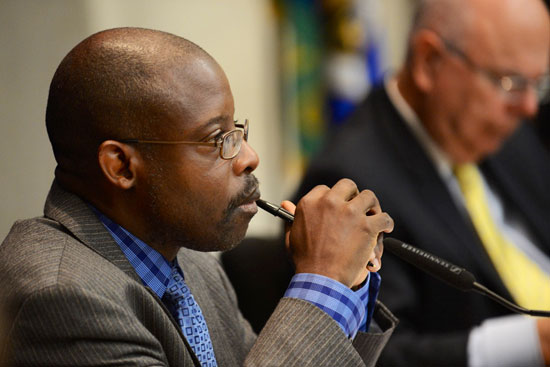
David Sanders, chair of the new child protection commission, says his DCFS years give him a unique perspective.
The director of Los Angeles County’s Department of Children and Family Services was on the hot seat. Social workers in the agency had failed to protect a young boy from the fatal blows of his mother, despite being aware of earlier abuse allegations against her.
“Let’s not kid ourselves,” Supervisor Gloria Molina lectured the agency’s director, who’d been summoned before the board during its weekly meeting. “This is about people not doing their jobs.” Molina demanded that the director act more forcefully to fire his “ill-trained” workers.
That kind of dressing-down easily could have occurred on any number of recent days, as the Board of Supervisors has confronted the death of 8-year-old Gabriel Fernandez, who was allegedly tortured by his mother and boyfriend after a long history of abuse complaints. But the case that triggered Molina’s ire came in early 2004. And the director was not the current boss, Philip Browning, but David Sanders, who resigned in mid-2006.
Among the many who’ve held the top position at DCFS, Sanders was the only one to leave without being shown the door by the supervisors, his reputation intact. Now he’s voluntarily back in a new high-profile job; on Thursday, he was selected as chairman of the Blue Ribbon Commission on Child Protection by his nine colleagues during the panel’s inaugural meeting.
Each of the county’s five supervisors appointed two members to the commission, which was created on a split vote of the board to investigate systemic failures in L.A.’s child protection system. Sanders, selected by Supervisor Mark Ridley-Thomas, is the only panelist with a true insider’s perspective on the pressures and dynamics within the huge agency entrusted with the welfare of nearly 35,000 children. (Click here for a look at the other appointees.)
“I know what it’s like to have a crisis come up and turn the department in another direction,” Sanders said by phone, while making a connecting flight in Denver to his home in Seattle, where he’s now an executive with a non-profit. He says he’s “acutely aware” of not placing unnecessary demands on DCFS that would distract the agency from its primary mission of protecting children. The commission’s examination, he says, will go far beyond DCFS to investigate the performance of the broader network of agencies with a role in child safety, from law enforcement to the schools.
Since DCFS’s creation in 1984, arguably no director has had a bigger impact than Sanders—one that continues to shape the agency’s philosophical and financial strategy towards both foster care and family reunification.
In the past, the agency would receive tens of thousands of dollars in state and federal funds for every child placed in foster care. Believing this created a financial incentive to remove at-risk youngsters from their families, Sanders championed what he described at the time as “a revolutionary” funding model in which the agency would receive a flat amount to spend not only on foster care but on new services and programs to keep families together.
The so-called waiver, which took effect in 2007, has been widely praised for dramatically reducing the number of children in foster care. But in recent years concerns have surfaced over whether this shift in funding has created another kind of incentive, keeping kids in potentially dangerous family situations so DCFS can use the money it saves on foster care for other departmental priorities.
Asked how he’d approach having to investigate the impact on DCFS of one of his greatest legacies, Sanders said: “I don’t feel reluctance to attack any policy that isn’t relevant to the circumstances today…I don’t think anything is sacred, whether it was stuff I thought was important 10 years ago or today. My belief is that there is a fundamental responsibility to assure children are safe.”
Although it’s been seven years since Sanders’ departure, he says he still works closely with his former agency—one that he’s now expected to approach as an independent fact-finder.
Sanders is an executive vice president of the Seattle-based Casey Family Programs, founded in 1966 to focus on foster care and improving child welfare systems throughout the country. He says the non-profit organization has “done a number of initiatives with the county,” including helping Browning and other DCFS officials rewrite the agency’s policy manual. “I have a passion for the work in Los Angeles,” he says.
Sanders says his selection as chairman of the child protection commission was “very humbling,” especially considering “the incredibly impressive group” that’s been assembled by the Board of Supervisors. He says the commission “isn’t going to tolerate a repeat” of earlier investigative efforts in which recommendations for reform went unheeded.
“This,” he says, “is a group that is going to be very action oriented.”
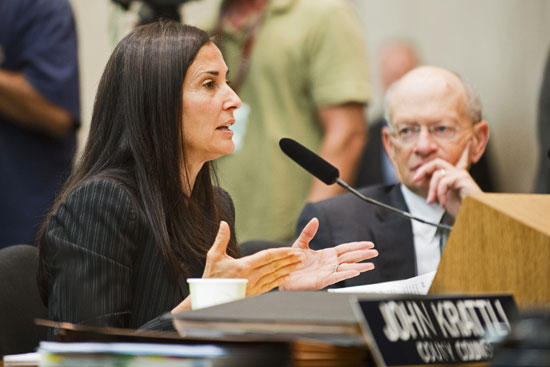
Child advocate Leslie Gilbert-Lurie and retired Judge Terry Friedman were appointed by Supervisor Yaroslavsky.
Posted 8/2/13
A breakthrough for vets
August 2, 2013
A few years ago, I was participating in the county’s biannual homeless census when I came upon a man sleeping under a bush on La Brea Avenue. It was winter, about 4 a.m. The man had been on the streets for ages. He shivered awake, and we talked for a few minutes, his breath steaming the night air, his clothing disheveled. Among other things, he told me he was a veteran.
That conversation was as heartbreaking as it was emblematic. More than 6,000 of Los Angeles County’s homeless are former military servicewomen and servicemen. Once, they volunteered to give their lives for their country. Now they wander our streets, their minds and bodies often addicted or damaged, their chances higher than average of ending up in the ranks of long-term street people at massive public expense.
That’s why, two years ago, we partnered with the Department of Veterans Affairs to launch a pilot program, a spinoff of our successful Project 50, to provide permanent supportive housing for a group of veterans identified as most likely to die on the streets.
There were 60 to start, severely mentally ill and chronically homeless. And, as with Project 50 on Skid Row, our veterans initiative, dubbed Project 60, started with the premise that if you give someone housing first—no moralizing, no demanding that they get a job or sober up as a condition of shelter—they’ll be more amenable to any medical, mental health or substance abuse treatment services you offer. That, in turn, will spare taxpayers the much higher cost of housing them in hospitals and jails.
It was a novel idea, and today, I am thrilled to report that it has paid off.
This week, during a meeting in Washington, D.C., with U.S. Sen. Dianne Feinstein, Rep. Henry Waxman and myself, Secretary of Veterans Affairs Eric Shinseki committed to dramatically scaling up the program, which, according to this year’s homeless census, contributed to a stunning 23% drop in the number of homeless vets over the last two years in Greater Los Angeles.
The VA’s commitment—part of the Secretary’s long-stated goal of ending homelessness among veterans by 2015—will fund and support a sweeping expansion of homeless services for veterans in L.A. County, from housing vouchers to medical outreach to a dedicated homeless services center at the West Los Angeles VA facility.
In all, it will allow us to house and treat more than ten times as many homeless vets in the next two years as we did over the last two. During this period, we expect to house 1,320 chronically homeless veterans. This represents the single most significant development on this issue in years.
It’s also the result of a lot of hard work and collaboration by Sen. Feinstein, Rep. Waxman and staff including Donna Beiter, who directs the VA’s Greater Los Angeles Healthcare System, the VA’s Michelle Wildy, Flora Gil Krisiloff in my office, Mary Marx with our county Department of Mental Health and front-line nonprofits Ocean Park Community Center in Santa Monica, St. Joseph Center in Venice, San Fernando Valley Mental Health Center and the Hollywood branch of Step Up on Second.
And it’s proof that when we build on our successful programs, we can make a life-saving difference. We have helped nearly 120 homeless mentally ill veterans through our original Project 60: a sailor who spent the past 15 years sleeping in a Santa Monica park and making monthly emergency room visits until he got housing; a former Marine who, after a decade, has begun to get sober in her Gardena apartment; a Vietnam vet, dying of cancer in a hospice, who came in from the night in time to make peace with his anguished family. Now the number being cared for will dramatically increase.
These veterans answered the call of our country when we needed them. Now they need us, and this week marks a huge breakthrough in helping Los Angeles answer that call.
Posted 8/3/13
Beyond “Baywatch”
August 1, 2013
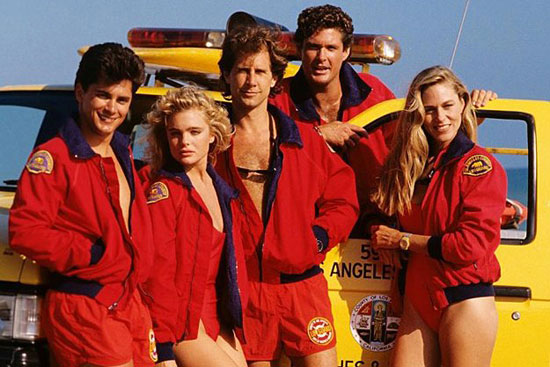
“Baywatch” made county lifeguards into global sex symbols—and made them leery for years about celebrity.
The Los Angeles County Fire Department is rarely surprised when Hollywood comes knocking. After all, their firefighters and lifeguards have some of the more exciting real-world jobs here in Tinseltown.
But for more than a decade, the department has shied away from film depictions.
“Our image is very important to us,” says Capt. Thomas Richards of the department’s public information unit. And, he says, shows like “Baywatch”—which turned L.A. County lifeguards into global eye candy in the 1990s—left county taxpayers, as well as some lifeguards, feeling burned.
Now, however, the department is dipping a cautious toe back into the show biz waters with a proposal to streamline the approval process for film requests.
Scheduled for consideration next week by the Board of Supervisors, the plan would let the department contract on its own with film production companies to do the limited filming necessary to create TV pilots, “sizzle reels” and other supporting material for pitches to the county.
The idea, Richards says, is to give fire officials—and ultimately the Board—a fuller sense of how county employees might be affected by or depicted in a proposed film or series while easing the frustration of producers, who often get a flat “no” from the department or wait weeks or months for an answer. Such filming would not be for public consumption, and the Board would retain final approval for any use on film of the department’s image, personnel, facilities or equipment.
“If we can show firefighters and lifeguards in a positive light, that’s a good thing, and these requests come to us all the time,” says Richards. But, he says, the current approval framework can be cumbersome and lengthy, and the requests are often time-sensitive.
That’s an understatement, says Bud Brutsman, chief executive officer of Brentwood Communications International, Inc., a North Hills production company that came to the county six months ago with a request to film county lifeguards for a reality show proposal featuring Venice Beach.
Brutsman says the show, operating under the working title “Venice 24/7”, has been commissioned by the Travel Channel as a West Coast spinoff of its successful “Airport 24/7: Miami,” a reality show about Miami International Airport. “The concept is to follow all aspects of the city—police, HazMat guys, lifeguards. For Venice, it’s a very positive thing.”
As part of the deal, he says, he has to shoot a so-called “sizzle reel”—a 2-to-3-minute collection of scenes that functions both as a preview and as proof that the producers have the access to generate a whole series. To do this, he has had to seek permission to film from both the City of Los Angeles and the county, which share responsibility for the community’s various municipal services.
But while the city services were shot in a matter of weeks, he says, he’s still awaiting permission from the county, which provides the community’s lifeguards.
Richards says that’s partly because the department decided to seek the policy change before responding. But, he says, decisions on filming, even for small proposals, currently require Board approval, which can be time-consuming.
The department spokesman adds that county lifeguards actually like the Venice project, viewing it as an opportunity to show real people performing a real public service. That’s a far cry from the way the department has viewed past TV depictions.
“Baywatch was very successful—for the producers of Baywatch. And that’s something that still comes up,” says Richards, noting that little revenue from the series ever found its way into county coffers, and that lifeguards came away feeling objectified by the show’s slow-motion scenes of god- and goddess-like actors loping down local beaches.
“Our lifeguards are the best in the business,” he says. “And the county got very little from that experience.”
Brutsman, the producer, hopes to convince the department that his show will be different. Still, he notes, delays and distrust just make it harder to do show business in the industry’s backyard.
“I gotta bear the cross for Baywatch?” he jokes. “”Hey, I didn’t like that show either! But if it helps, we can leave our slow-mo camera at home.”

A proposed reality show about Venice Beach has been waiting for months to shoot a 3-minute “sizzle reel.”
Posted 8/1/13





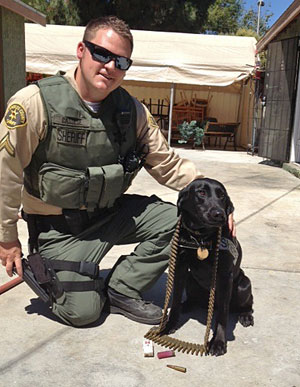

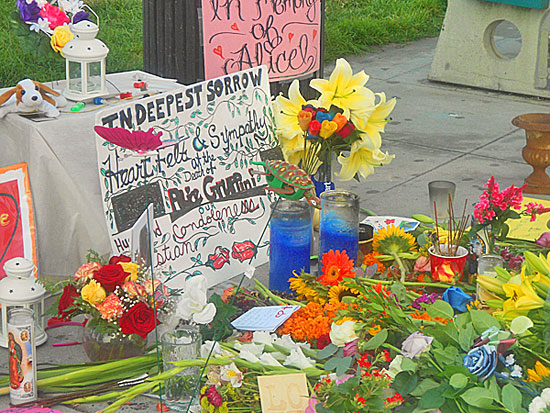



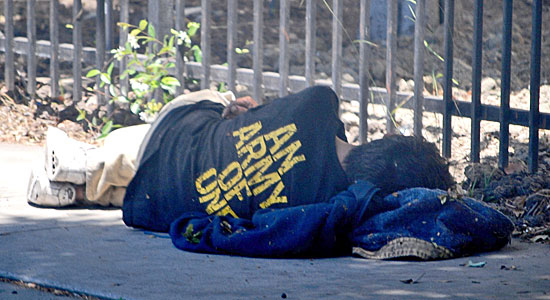





 Check for the latest closure information
Check for the latest closure information








